Celiac disease is achronic inflammation of the small intestine triggered by the ingestion of gluten, a protein component present in some cereals, and more specifically, to one of its fractions, gliadin.
«In genetically predisposed people this substance it can provoke an immunological response which manifests itself with very different symptoms, but is always characterized byinflammatory alteration of the intestinal mucosa and consequent malabsorption », he explains Sonia Bolognesi, nutrition biologist in Porto Sant'Elpidio (Fermo) and Osimo (Ancona).
But how widespread is the problem? How is the diagnosis reached? AND what nutritional precautions should be taken? Let's be clear.
The numbers in the country
It is estimated that in our country the problem affects about 1% of the population.
"This means that there are about 600.000 celiacs. But in reality only 30% of them know they are, because the number of people who undergo tests is still low. THE symptoms, in fact, are often faded and superimposable to those of common gastrointestinal disorders such as colitis ", explains the expert.
4 different shapes
«The“ typical ”celiac disease occurs immediately after weaning with symptoms such as diarrhea and stunting. In fact, those who are predisposed become celiac only after the introduction of gluten into the diet»Continues Dr. Bolognesi. «The 'atypical' one, on the other hand, has a late onset, i.e. in adulthood, and among its manifestations there are intestinal disorders (such as constipation, bloating and diarrhea) and extraintestinal, such asiron deficiency anemia unresponsive to iron treatment oral, bleeding disorders, osteoporosis, aphthous stomatitis, amenorrhea, infertility and even depression. However, very often several years pass before it is recognized».
Finally, they exist two less common forms: the "silent", devoid of any striking symptoms, and the "potential", characterized by positive blood tests and normal intestinal biopsy.
How to get to the diagnosis
If celiac disease is suspected, first-level tests predict blood tests for the detection of anti-transglutaminase antibodies (tTG) of the IgA class and of the anti-endomysium antibodies (EMA), also of the IgA class.
"In case of both positive we go to the duodenal biopsy, performed during gastroscopy. Genetic testing may provide further confirmation, but alone is not sufficient for diagnosis: in fact, the presence of the HLA-DQ2 and DQ8 alleles is found in 30% -40% of the general population, even if only 1% develops celiac disease. The test however has a high negative predictive value: if the two alleles are missing, the risk of showing intolerance is practically nil ", points out the nutritionist biologist.
So at the table
THEexclusion of gluten from the diet is mandatory and exceptions are not allowed, because even a small amount can cause problems.
«The foods to stay away from are cereals like wheat, barley, rye and spelled, in addition to products from these derivatives, such as for example flour, semolina, flakes, malt. In addition, even foods such as may contain gluten sauces, jams and even sausages. For this reason it is essential to carefully consult the label and, if in doubt, refer to the handbook of the Aic, the Celiac Country Association ”, suggests Dr. Bolognesi.
Not for this reason the meals of the celiac must be poor and monotonous: «They are many cereals allowed, from corn to rice, from buckwheat to millet and amaranth, as well as gluten-free products. In fact, many companies have eliminated it from their supply chain and on food packages such as ready-made pesto, spreadable cheeses or tubs of cooked ham you will find the wording "gluten-free". Then there are the substitute foods specially created for celiacs, which you recognize by the crossed-out ear mark ”, explains the expert. «The ideal is to integrate the processed products with naturally gluten-free raw materials. It is not necessary to take supplements: nutritional needs are the same as for the healthy person. A checkup within 6-12 months of diagnosis and then every 1-2 years is sufficient to verify the correctness of the diet followed ".
The risk of contamination
A recent American study published in the American Journal of Clinical Nutrition revealed that strictly following a gluten-free diet not always enough to avoid the risk of patients eating gluten. In fact, the results showed that the daily quantity taken it can exceed 200 mg in spite of the 10 mg limit.
How is it possible? "It depends on so-called "hidden" gluten, due to accidental contamination », replies the nutritionist biologist. «This can be one of your types:" crusade ", that is, caused by possible crosses between products with and without gluten along the supply chain; and "environmental", ie caused by incorrect behavior of the consumer or restaurateur during the storage and preparation of food ".
To minimize the risk, in addition to simple common sense rules in the kitchen (such as, for example, do not drain the gluten-free pasta where the wheat one has just drained or do not cook the steak on the same grill used to prepare the bruschetta of common bread), it is advisable go to restaurants that display the Aic logo.
“Furthermore, it is indispensable always read labels carefully, even in the case of apparently safe foods such as corn flour: if the food is produced in a plant where ingredients containing gluten are also processed, thecompany is required to indicate this on the packaging and it is better to refrain from consumption ", concludes the expert.
A pill that it gives hope
For celiacs, they may arrive soon important news from scientific research. Among the many solutions being studied, there is a molecule developed by some researchers from the Vienna University of Technology: the substance, developed from cells of the bacterium Escherichia coli, is able to bind gluten and thus avoiding reactions of the immune system. The team of experts indicates 2021 as a possible date for the product to be marketed. If the first results are confirmed, it will be enough take this preparation before consuming foods with gluten to avoid risks.
And now, browse the gallery and discover the gluten-proof balanced menu!
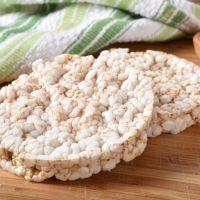
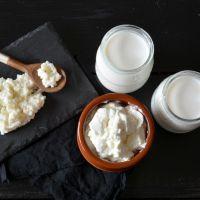
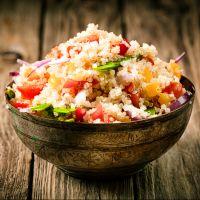
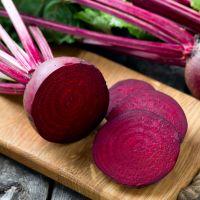
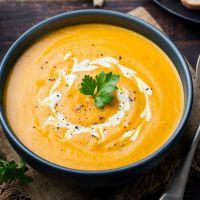
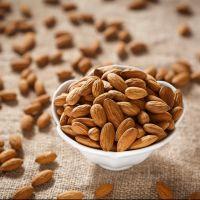
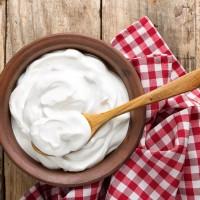

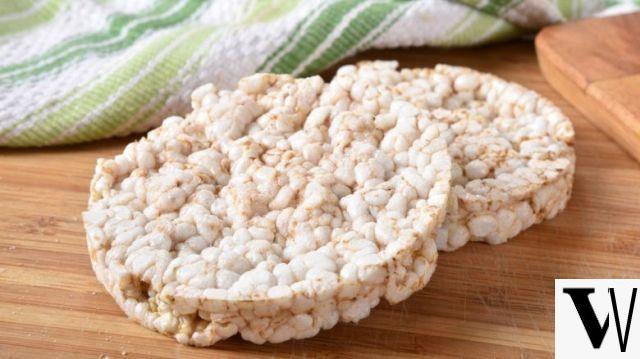
Monday
↘ Breakfast
2 rice cakes with gluten-free jam + 1 natural white yogurt
↘Snack
fresh seasonal fruit smoothie
↘Lunch
70 g of amaranth paste with sautéed vegetables + 40 g of boiled black beans
↘Merenda
10-12 natural almonds + 1 fresh seasonal fruit
↘Price
80 g of rice with asparagus + 1 soft-boiled egg + 1 plate of sour spinach
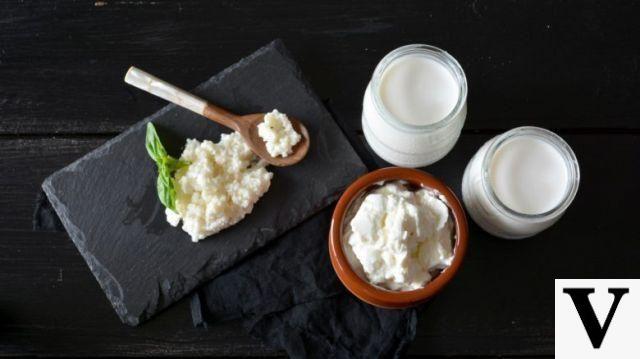
Tuesday
↘ Breakfast
1 cup of kefir + 30 g of rice cereal
↘Snack
1 citrus juice
↘Lunch
80 g of black rice with gluten-free tomato sauce and 1 tablespoon of freshly grated Parmesan cheese + 100 g of grilled turkey breast + 1 plate of grilled mixed vegetables
↘Merenda
1 seasonal fruit smoothie
↘Price
1 plate of mixed legume and quinoa soup + 1 plate of sautéed chicory
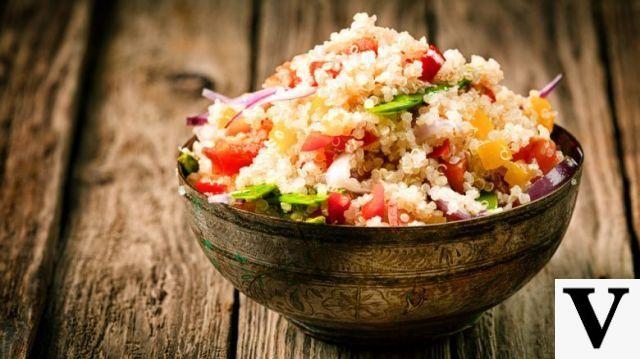
Wednesday
↘ Breakfast
3-4 dry gluten-free biscuits + 1 cup of latte
↘Snack
4 walnuts + 1 seasonal fruit
↘Lunch
80 g of quinoa with tuna + 1 plate of mixed salad
↘Merenda
1 natural yogurt with 30 g of amaranth flakes + 1 seasonal fruit
↘Price
1 plate of vegetable soup + 1 grilled salmon steak + 1 boiled purple potato
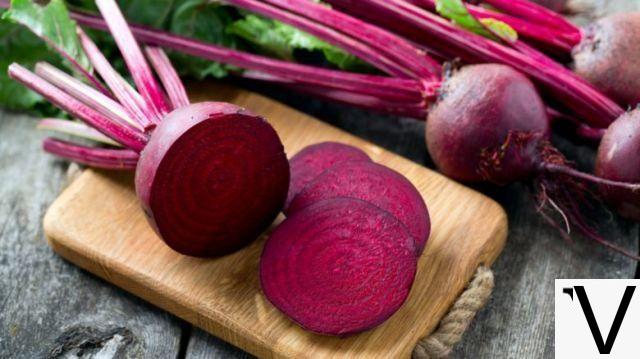
Thursday
↘ Breakfast
150 ml of semi-skimmed milk without lactose + 30 g of corn flakes + 1 cup of unsweetened green tea + 1 seasonal fruit
↘Snack
30 g of gluten-free bread with 30 g of gluten-free turkey breast
↘Lunch
70 g of rice pasta with mushrooms + 20 g of Grana cheese + 1 plate of red beets
↘Merenda
1 cup of kefir + 1 seasonal fruit
↘Price
1 plate of lentil soup with buckwheat noodles + 1 soft-boiled egg + 1 plate of sautéed broccoli
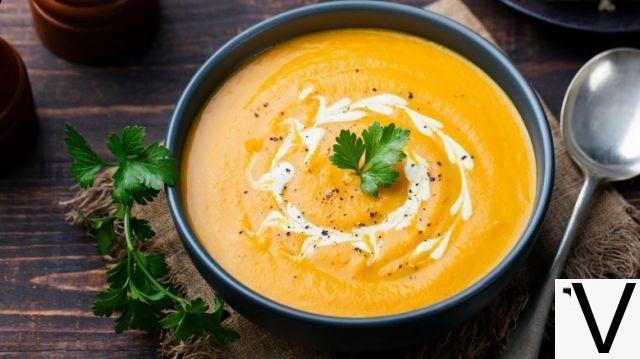
Friday
↘ Breakfast
2 rice cakes with honey + 150 ml of lactose-free semi-skimmed milk
↘Snack
fresh seasonal fruit smoothie
↘Lunch
60 g of quinoa with 20 g of chickpeas + 1 plate of raw seasonal vegetables
↘Merenda
1 natural white yogurt + 1 seasonal fruit
↘Price
1 homemade pumpkin soup + 150 g of grilled mackerel fillet + 40 g of gluten-free bread
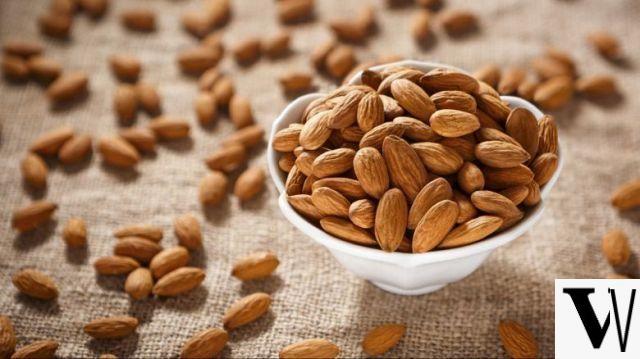
Saturday
↘ Breakfast
3-4 dry gluten-free biscuits + 1 unsweetened lactose-free latte
↘Snack
1 banana
↘Lunch
70 g of buckwheat pasta with vegetables + 100 g of grilled chicken breast + 1 plate of mixed salad
↘Merenda
8 natural almonds + 1 seasonal fruit
↘Price
1 plate of mixed legume soup with 30 g of amaranth flakes + 1 plate of boiled chicory
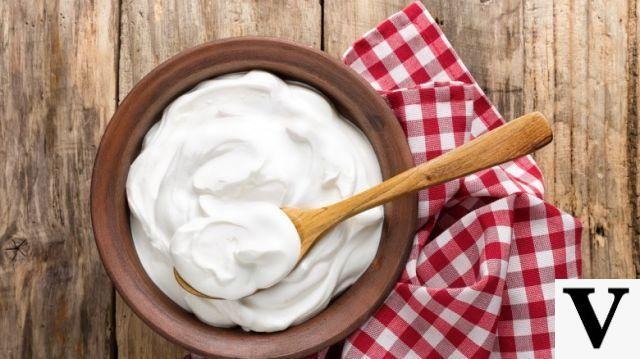
Sunday
↘ Breakfast
1 natural white yogurt with fresh seasonal fruit + 30 g of quinoa flakes + 1 cup of black tea
↘Snack
1 citrus juice
↘Lunch
70 g amaranth paste with homemade pesto + 100 g veal slice with lemon + 1 plate of Brussels sprouts
↘Merenda
8 natural almonds + 1 seasonal fruit
↘Price
1 plate of bean soup with 40 g of rice + 150 g of grilled tuna + 40 g of gluten-free bread


























